
This is a context clue lesson plan. It includes a pre-test and post-test and strategies to teach context clues.
- Subject:
- Literature
- Secondary English Language Arts
- Material Type:
- Activity/Lab
- Assessment
- Author:
- Rebecca
- Tara
- Date Added:
- 04/02/2022

This is a context clue lesson plan. It includes a pre-test and post-test and strategies to teach context clues.

In this activity, students analyze a photograph and infer the experiences of a Chinese man who was used in an ethnographic display. Primary resources used. Appropriate for teaching the effects of imperialism or how cultures viewed one another as "other." Online resource.

This activity proposes different small experiments and discussions to show that in the summer it is cooler by the sea than on the land and that water cools off more slowly than soil.

In this lesson designed to enhance literacy skills, students learn how the theory that explains the position of Earth's continents was established and later modified, and gain important insights into how science and the scientific community operate.

This resource is a Social Studies student activity that utilizes Utah's Online Library resources - specifically, World Book Encyclopedia (World Book Discover) and eMedia to help students learn about continents.

This is a lesson plan that fits the core curriculum for 2nd grade social studies. Students will be able to identify and label the seven continents, five oceans, two poles, and the equator on a map. Thumbnail: "World Political Map." Gale Elementary Online Collection, Gale, a Cengage Company, 2020. Gale In Context: Elementary, link.gale.com/apps/doc/LJQVQK451405211/ITKE?u=onlinelibrary&sid=bookmark-ITKE&xid=c47a5c55. Accessed 31 July 2022.
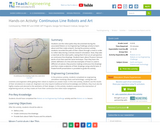
Students use the robot paths they documented during the associated Robots on Ice Engineering Challenge activity to learn about and then make artwork. During the previous activity, students recorded the path of their robots through a maze in order to collect data during a remote research simulation. Now, they take a new look at the robot paths, seeing them from an art perspective as continuous line drawings. Students learn about Picasso’s famous works of art that used the same technique. Then they learn the artistic definition of a line and see examples of how it is used in different art pieces; they practice making continuous line drawings and then create sculptures of their drawings using colorful wire. A PowerPoint® presentation is provided to guide the activity.
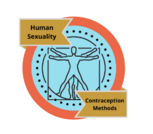
This microcredential represents educators' effective instruction on contraception, including abstinence. This is the third microcredential in the Human Sexuality stack. This stack of microcredentials fulfills one of the requirements of a pathway for endorsement. Click the More Info button to learn more.
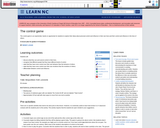
The control game is an experiential, hands on opportunity for students to explore their ideas about personal control and influence in their own lives and their control and influence in the lives of others.
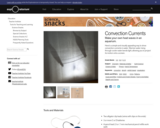
In this activity, learners make their own heat waves in an aquarium. Warmer water rising through cooler water creates turbulence effects that bend light, allowing you to project swirling shadows onto a screen. Use this demonstration to show convection currents in water as well as light refraction in a simple, visually appealing way.

This video segment adapted from the Atmospheric Radiation Program explains the differences in the formation of tropical convective cloud systems over islands and over the ocean.

A conversation on hidden bias. Introduction and Howard J. Ross presentation.
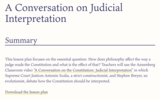
This lesson plan focuses on the essential question: How does philosophy affect the way a judge reads the Constitution and what is the effect of that? Teachers will use the Annenberg Classroom video âA Conversation on the Constitution: Judicial Interpretationâ in which Supreme Court Justices Antonin Scalia, a strict constructionist, and Stephen Breyer, an evolutionist, debate how the Constitution should be interpreted.
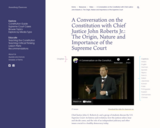
Chief Justice John G. Roberts Jr. and a group of students discuss the U.S. Supreme Court: its history and evolution; how the justices select, hear and decide cases; and the role of an independent judiciary and other issues crucial to a healthy democracy today.
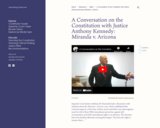
Supreme Court Justice Anthony M. Kennedy leads a discussion with students about the Miranda v. Arizona case, which established that criminal suspects, at the time of their arrest and before any interrogation, must be told of their Fifth Amendment protection against self-incrimination and Sixth Amendment right to an attorney. The decision led to the familiar Miranda warning that begins "You have the right to remain silent..."
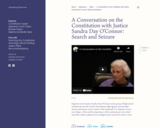
Supreme Court Justice Sandra Day O'Connor and a group of high school students discuss the Fourth Amendment right against unreasonable search and seizure in the context of the landmark U.S. Supreme Court case Mapp v. Ohio and the importance of the exclusionary rule, which says that evidence gathered in an illegal search cannot be used in court.
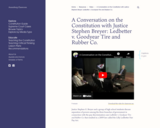
Justice Stephen G. Breyer and a group of high school students discuss separation of powers among the three branches of government in connection with the pay discrimination case Ledbetter v. Goodyear Tire and Rubber Co. that resulted in a 2009 law called the Lilly Ledbetter Fair Pay Act.
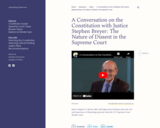
Justice Stephen G. Breyer talks with high school students about the role and importance of dissenting opinions when the U.S. Supreme Court decides cases.
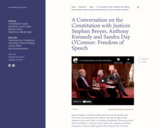
Justices Stephen G. Breyer, Anthony M. Kennedy and Sandra Day O'Connor and students discuss students' free speech rights in the Supreme Court cases Tinker v. Des Moines Independent Community School District and Morse v. Frederick. In the Tinker case, students wore black armbands to school in silent protest of the Vietnam War. The three students were sent home. In the Morse case, a student held up a sign that said âBong Hits 4 Jesusâ at a school-supervised parade and was subsequently suspended for 10 days
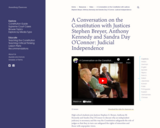
High school students join Justices Stephen G. Breyer, Anthony M. Kennedy and Sandra Day O'Connor to discuss why an independent judiciary is necessary and the way the Constitution safeguards the role of judges so that they in turn can safeguard the rights of minorities and those with unpopular views.